The Awakening of the Modern Television Era: 50 Years of Colour TV in Singapore
People weren’t particularly interested in upgrading their black-and-white TVs to colour TVs. Then came the World Cup.
By Mohamad Karazie and Tan Jie Ling
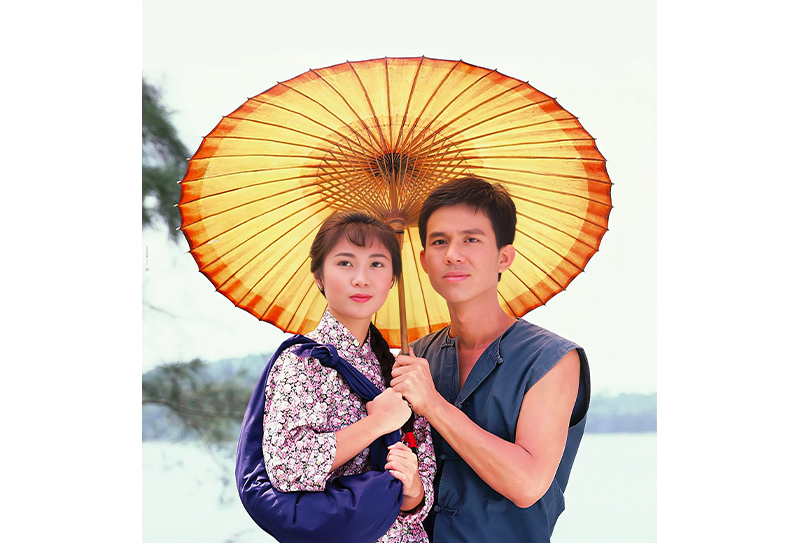
Starting from the 1980s, the Singapore Broadcasting Corporation (SBC) – the precursor to today’s Mediacorp – began churning out highly popular local TV dramas in Mandarin. Shows like The Flying Fish (小飞鱼; 1983),1 The Army Series (新兵小传; 1983)2 and The Awakening (雾锁南洋; 1984)3 became massive hits for the state broadcaster.
Apart from their high production values and compelling storylines, what made these SBC dramas so addictive were the actors themselves. Blessed with talent, youth and good looks, Channel 8 stars like Xiang Yun, Huang Wenyong, Edmund Chen and Li Nanxing, and later, Zoe Tay and Fann Wong, dominated the small screen. In the process, they became local royalty.
One factor that made watching these actors, and these shows, so enjoyable was something that we take completely for granted today: everything was in colour. The Awakening or Samsui Women (红头巾; 1986)4 would have been much less compelling in black-and-white. It is quite remarkable that it took a mere decade after colour TV came to Singapore for SBC to produce television programmes that people would eagerly consume week after week.
Singapore first began broadcasting in colour in 1974, just 11 years after television itself made its debut here. Culture Minister S. Rajaratnam was the first person to appear on national TV when he launched Television Singapura at the Victoria Memorial Hall on 15 February 1963.
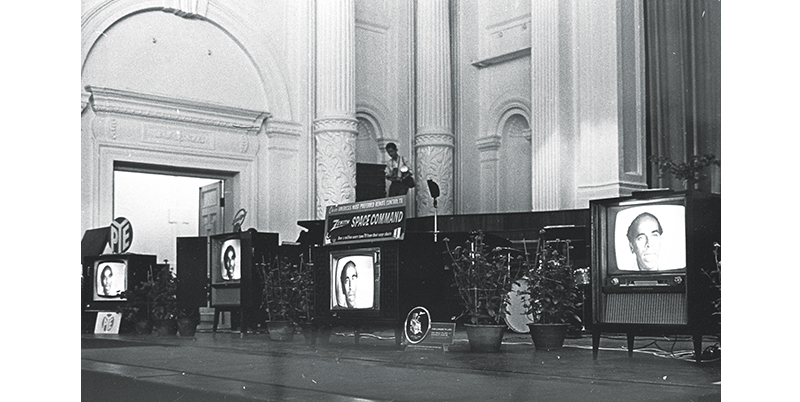
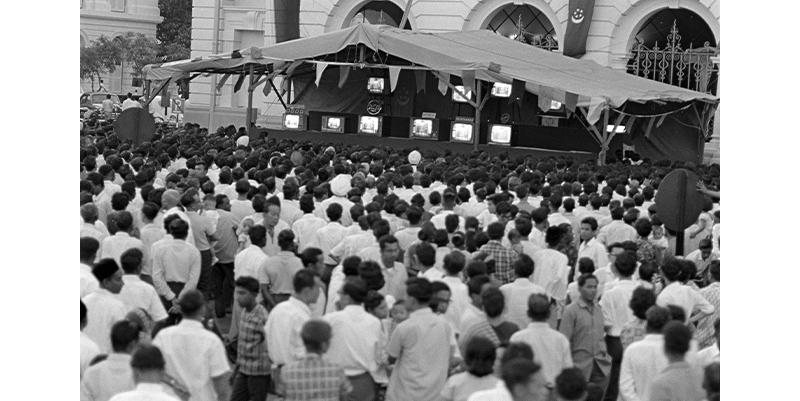
Between 1963 and 1974, all TV programmes in Singapore were broadcast in black and white. There was, however, a global move to shift away from monochrome to colour, and Singapore did not want to be left behind.
“The advent of colour television places Singapore amongst many of the highly developed countries in the West and Asia,” said Lim Hock Poh, president of the Radio and Electrical Traders Association of Singapore (RETAS) at the Colourvision & Sound Exhibition held at the National Stadium in August 1974. “It not only reflects our capability in adapting to modern telecommunications but also signifies our advanced technological knowledge.”5
The introduction of colour TV sets in May 1974 initially did not attract much enthusiasm in Singapore though. It was perceived as an unnecessary upgrade by many, reflecting a sentiment shared globally. However, the situation changed when it was announced that Singapore would broadcast the World Cup final live, in colour, on 7 July that year.6
The highly anticipated match sparked a buying frenzy in colour TV sets, with 2,000 units sold the day before the match. One of the first colour TVs available in Singapore was the Sierra 22 CTV 26 console encased within a hardwood frame. Imported from Holland, it cost around $2,400, a considerable amount of money given that the average monthly salary was between $300 and $500 in the 1970s.7 The price did not seem to be a major hindrance though. “We don’t seem to be able to supply sets fast enough to the dealers,” said Song Choo Chai, managing director of Asia Radio, the sole agent for Sierra.8
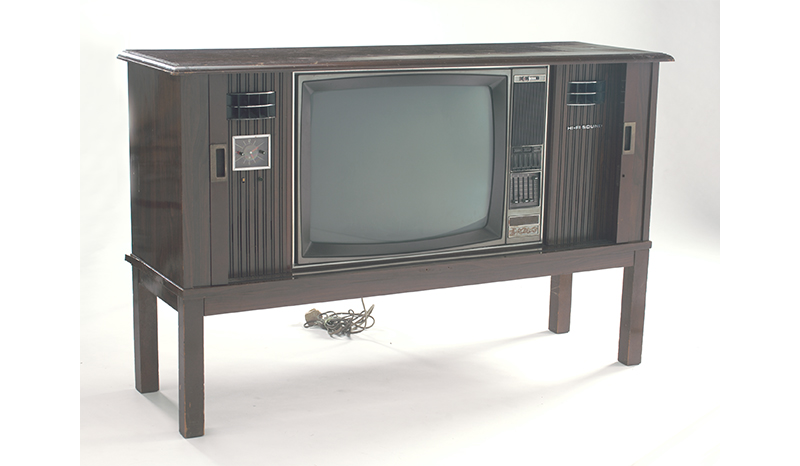
Among those who enjoyed their new colour Sierra TV was mother of two Irene Chee, whose husband had bought a set in the mid-1970s. “I was initially watching a Hong Kong Cantonese period drama in black and white,” she recalled. “After we bought the colour TV, the show became so much more enjoyable. I was amazed to see that the emperor’s robes were in a bright yellow, and the attire of the empress and concubines were in various shades of brilliant colours.” The Sierra served her well for a good 20 years, and after that she used it as a display for photo frames and other ornaments.9
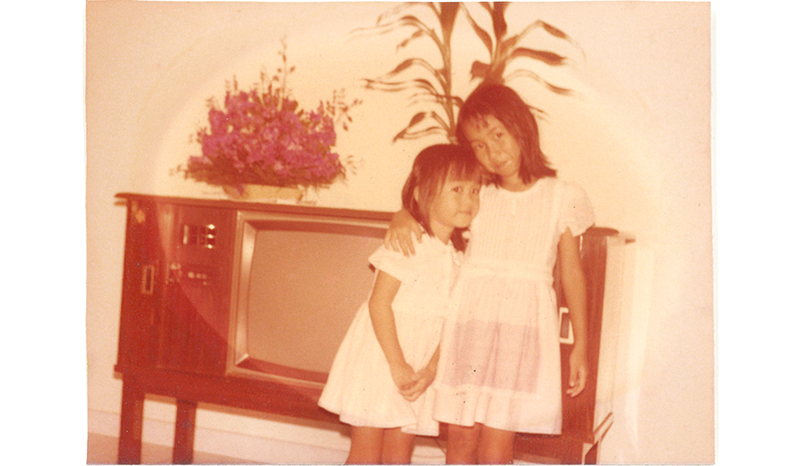
Besides the sale of colour TVs, there was also a sharp rise in the number of TV rentals. A Rediffusion spokesman told the Straits Times that those “who [could not] afford to pay $2,000 or so to buy a set, agreed to rent sets, although contracts [had] to be on a yearly basis”.10
Preparing for Colour TV
The switch from black and white to colour was not a simple one. Radio and Television Singapore (RTS; formed from a merger of Television Singapura with Radio Singapura in 1965) spearheaded the overhaul of broadcasting infrastructure for colour broadcasts in Singapore. RTS engineer Ujagar Singh explained that “black and white facilities had to be converted into colour because colour requirements were different and more stringent. In the studio, we had to, of course, besides buying new equipment, cameras, we also had to change our lighting system. Because colour requires more intense lighting to reproduce the colours… all the equipment had to be replaced with new colour equipment,” he said.11 This led to the replacement of 90 percent of existing equipment to ensure compatibility with colour transmission standards.12 An estimated $20 million was set aside for this endeavour.13
Personnel had to be trained as well. RTS engineers and technicians were sent to London and Germany for training. Among them was engineer Philip Tay Joo Thong, who attended the six-month Colour TV Engineering course at Thomson TV College in London and met many people especially from Africa. “So we start[ed] to learn about the basic[s]… why three tubes, the reproduction of colour, what makes yellow yellow, what makes green – the complementary colours and so forth,” he recalled in an oral history interview.14
Staff who did not have the opportunity to attend overseas courses were trained by their colleagues when they were back in Singapore. The British Broadcasting Corporation sent an advisor, John Castle, to help RTS with the equipment installation and subsequent training of staff.15
Besides engineers and technicians, staff of the camera unit had to acquire additional expertise and technical knowledge to operate the new colour equipment. “For black and white you don’t have to worry about colour temperature,” said cameraman Mun Chor Seng in an oral history interview. “Whether you’re filming indoor or outdoor, it come[s] out monochrome. Whereas if you use colour, you have to think of the artificial light and the normal sunlight, because both have different colour temperature[s]. So if you were [to] use the colour film, you have to do colour conversion in order to maintain the uniformity on your final finish[ed] product. That is the main thing that one has to remember.”16
In August 1974, RETAS organised the 10-day Colourvision & Sound Exhibition at the National Stadium that showcased $2.5 million worth of colour and sound equipment from more than 30 booths and 20 exhibitors. “Demonstrators and trained technical personnel will show visitors what to look for when adjusting and aligning their TV sets,” said Roland Yeo of RETAS. This was one of the highlights of the exhibition.17
Launch of Colour TV
No stone was left unturned ahead of the debut of colour TV at the 1974 World Cup final held in Munich.18 Before the match, the main community centres in all 65 constituencies across Singapore had colour TV sets installed. “It will be an exciting experience to view the World Cup Soccer final in colour,” said Culture Minister Jek Yeun Thong in an interview with the New Nation.19
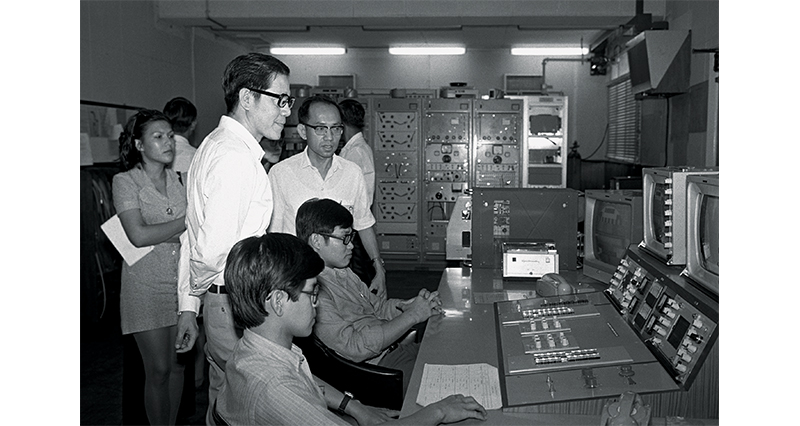
Several hotels also jumped on the bandwagon by screening the match on their premises. The Shangri-La had about 30 colour TV sets in its Island Ballroom, which had a seating capacity of 600. Admission was free but people had to pay for refreshments. The Mandarin Hotel had nine TV sets and also two screens at the Kasbah, the Pine Court and the Clipper Bar, with the first round of drinks served at $5. Nanyang University set up three colour TVs at its Union House, canteen and library.20
Even coffeeshops joined in the soccer mania. “I don’t understand much about football but every time there is a match over television I have more customers,” said the owner of a roadside coffee stall in Chinatown who had a TV set.21 The much-anticipated match saw host West Germany beating Holland by a narrow margin of 2–1.22
After the match, RTS reverted to monochrome programme with the promise that the upcoming National Day Parade would be broadcast in colour. The live telecast of the parade in colour sparked another mad dash to snap up colour TV sets. In fact, the demand was described by dealers as “better than the rush for colour sets just before last month’s World Cup soccer final”.
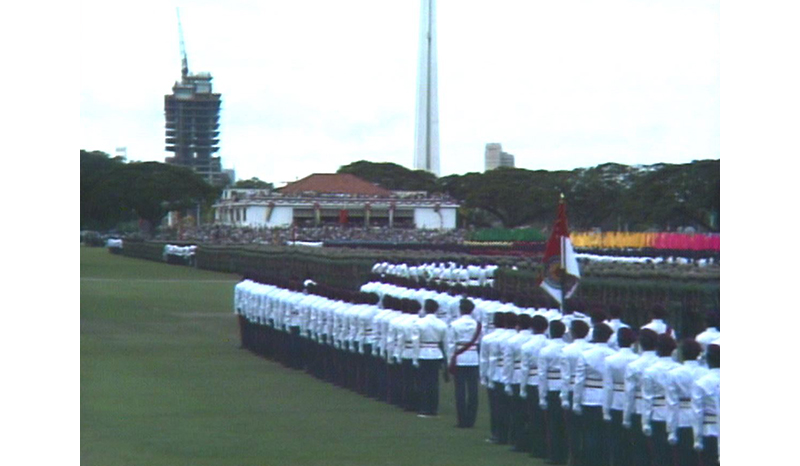
Most dealers and renters also reported that they had run out of stock of colour TVs, with one agent telling the Straits Times that he had a “waiting list of a few hundred customers”. “Because the orders just poured in, we cannot handle them straight away,” he said. Fortunately, those without colour TVs could watch the parade from any of the 26-inch colour TV at 63 community centres.23
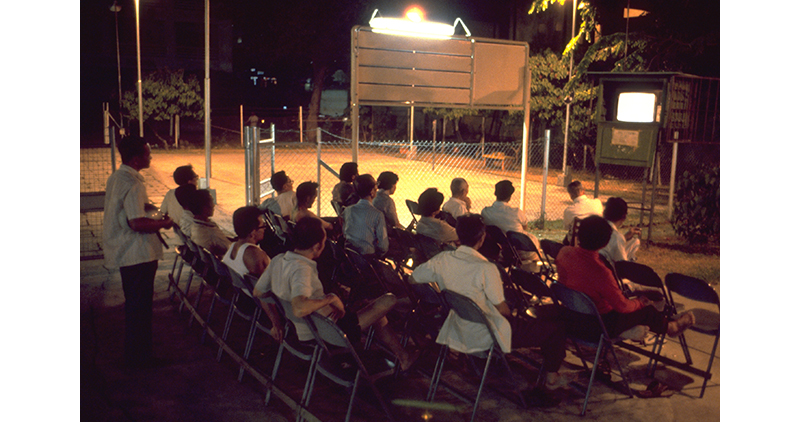
The Formative Years
While the West Germany–Holland match was the first colour broadcast, it was only a pilot. Officially, colour broadcasting in Singapore began on 1 August 1974, starting with the programme Anatomy of a Parade on Channel 5 at 7.40 pm.24 This was a Malay documentary showing behind-the-scenes footage of people preparing for the upcoming National Day Parade.25 The same programme was subsequently televised on different days in English, Chinese and Tamil.26
With the transition to colour came local programmes, also in colour, which were initially made on shoestring budgets with a lean production team. By the end of 1974, all newsreels were televised in colour. Local programmes in colour were broadcast four hours on weekdays and six hours on weekends. By 1977, these had increased to 78 hours per week, making up about 75 percent of weekly programming. At this point, all news bulletins, sports events, and musical and variety shows were in colour.27
As a government body, RTS produced mainly educational and informational programmes. News, documentaries and children’s programmes made up most of the local productions. Light entertainment such as musical and variety shows rounded up the list.28
School debate finals were one of the programmes produced by RTS. The first debate televised in colour was between National Junior College and Hwa Chong Junior College in 1975, and the topic was “That parents who send their children overseas for a secondary education are doing irreparable harm to their children”. National Junior College, who opposed the motion, won the debate.29
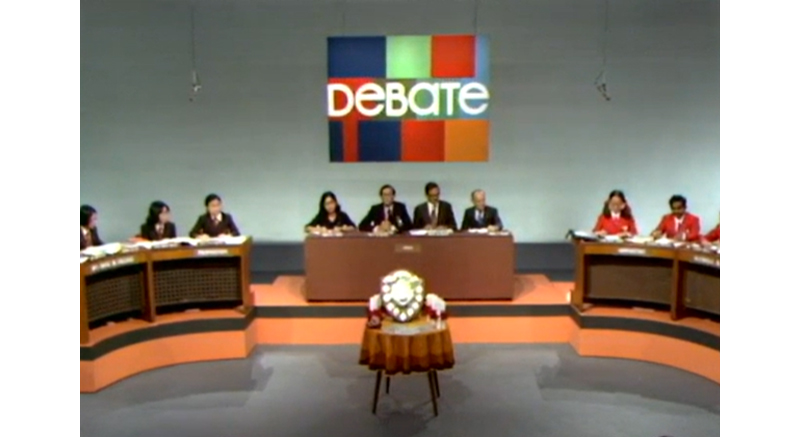
RTS also regularly produced documentaries about Singapore. One of these was On the Spot, a 1976 series that showcased different parts of Singapore. Episode 12 of the series featured Singapore’s parks and also local singers from different ethnic backgrounds singing in the parks. Performers included singer and composer Michael Isaac, Malay singer and entertainer Kartina Dahari and popular Mandarin singer Wu Jing Xian (吴静娴).30
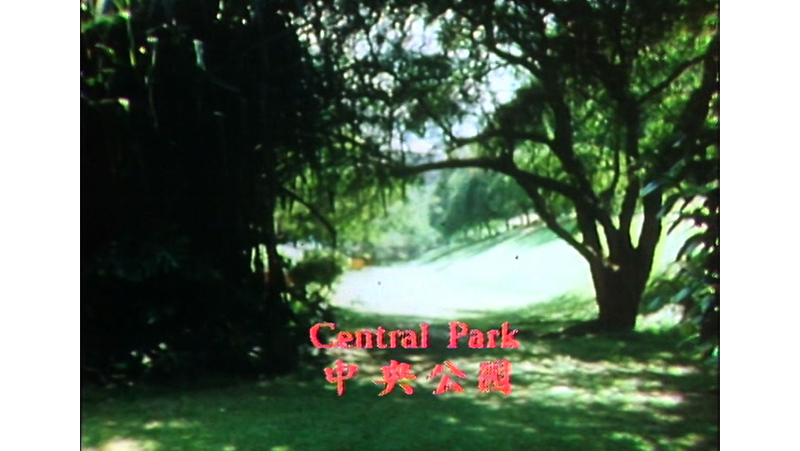
Singapore’s homemade programmes kicked up a notch when the SBC was formed on 1 February 1980, following the corporatisation of RTS. Armed with a more commercial drive, and a bigger budget for drama production, the quality and quantity of local programmes improved significantly. Local dramas, especially Chinese dramas, flourished.
Seletar Robbery (实里达大劫案; 1982) is the first Mandarin drama to be produced by SBC and laid the foundation for future well-regarded productions like The Awakening and The Coffee Shop (咖啡乌; 1985–86).31 Seletar Robbery was based on an actual case where about $300,000 had been stolen from a construction site at Seletar Reservoir.32
Subsequently, The Coffee Shop, which aired from 16 December 1985 to 4 February 1986, became the first Mandarin TV serial to pass the one million viewership mark with 1,123,000 adult viewers. The story revolves around the lives of ordinary Singaporeans living in housing estates, depicting their joys, sorrows and aspirations. Previously, the records had been held by Hong Kong Cantonese serials, Man in the Net (网中人; 1980) and Chameleon (网中人; 1981).33
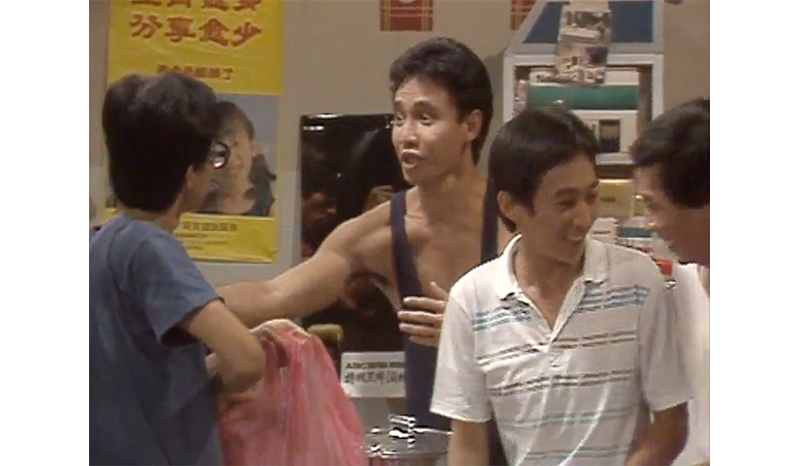
Of course, merely showing something in colour was not a guarantee of success, no matter how good-looking the cast. The public reception to early local TV drama productions in English is a case in point. Some, like Masters of the Sea (1994) and VR Man (1998) were embarrassing flops. Others like Triple Nine (1995–99),34 Under One Roof (1995–2003)35 and Growing Up (1996–2001)36 were genuine hits.
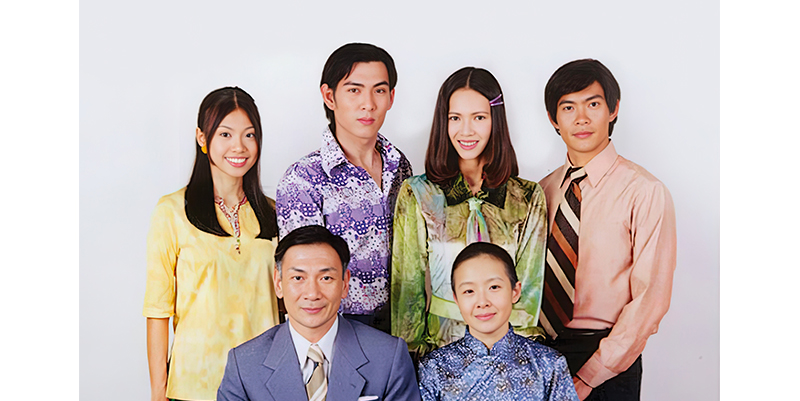
Perhaps the most popular of them all was Phua Chu Kang Pte Ltd (1997–2007), a sitcom starring Gurmit Singh and Irene Ang.37 Centred around a Singlish-speaking general contractor with permed hair, a prominent facial mole and trademark yellow boots, and who boasts that he is “the best in Singapore, JB, and some say Batam”, the show lasted eight seasons – attesting to its popularity.
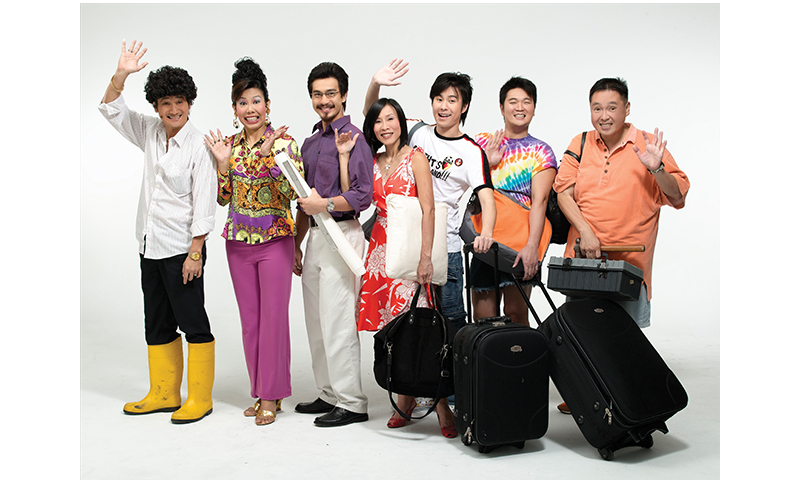
In many ways, the television industry is very different today from the early days of the 1970s and 1980s. The state broadcaster Mediacorp continues to produce local programmes, but it now has to compete for time and attention with computer games, social media and YouTube. People are still watching television but there is a universe of choice now, thanks to streaming giants like Netflix, Disney+ and Amazon Prime. TV sets themselves have changed. No longer boxy appliances housed in wooden cabinetry, these days, large, flat and slick screen TVs are mounted on walls.
Manufacturers are still trying to get consumers to upgrade their TVs though. Consumers are constantly being seduced by ever larger screens that display impossibly sharp images. At the same time, these companies are also investing in technology that produces colours brighter and more vivid than ever before. Demo sets in electronics stores show luscious images in hyper-realistic colours running on a loop. The promise of a world of better colour continues to beckon.
Click here for a list of programmes in colour produced by Radio and Television Singapore and the Singapore Broadcasting Corporation that are available on Archives Online.
 Mohamad Karazie has been immersed in history since joining the National Archives of Singapore as an Archivist in 2021. He has a deep passion for Singapore history and shares its stories across various platforms.
Mohamad Karazie has been immersed in history since joining the National Archives of Singapore as an Archivist in 2021. He has a deep passion for Singapore history and shares its stories across various platforms. Tan Jie Ling is a Senior Manager with the Audio Visual Archives department at the National Archives of Singapore. A TV addict who loves the power of television, she is happy to be part of the department that collects, preserves and facilitates access to the nation’s audio-visual memories.
Tan Jie Ling is a Senior Manager with the Audio Visual Archives department at the National Archives of Singapore. A TV addict who loves the power of television, she is happy to be part of the department that collects, preserves and facilitates access to the nation’s audio-visual memories.Notes
-
Singapore Broadcasting Corporation, “The Flying Fish,” 1983, video. (From National Archives of Singapore, accession no. 1997003198) ↩
-
Singapore Broadcasting Corporation, “The Army Series,” 1983, video. (From National Archives of Singapore, accession no. 1997003216) ↩
-
Singapore Broadcasting Corporation, “The Awakening,” 1984, video. (From National Archives of Singapore, accession no. 2016006948) ↩
-
Singapore Broadcasting Corporation, “Samsui Women,” 1986, video. (From National Archives of Singapore, accession no. 1997008888) ↩
-
“The Big, Big Show…,” New Nation, 3 August 1974, 4. (From NewspaperSG) ↩
-
Gwen Pew, “Time Out Singapore: ‘50 Years of Television’ Preview,” 21 January 2014, https://gwenpew.com/2014/01/21/tos-50-years-of-television/. ↩
-
“Sierra 222 CTV 26 Colour Television Console Clad in a Hardwood Frame,” 1974, photograph, National Museum of Singapore Collection, https://www.roots.gov.sg/Collection-Landing/listing/1170380. ↩
-
“Sale of Colour TV Sets Jumps to New High,” Straits Times, 3 July 1974, 13. (From NewspaperSG) ↩
-
Irene Chee, interview, 2 June 2024. ↩
-
Ujagar Singh, oral history interview by Patricia Lee, 13 March 2003, MP3 audio, Reel/Disc 4 of 15, National Archives of Singapore (accession no. 002748), 19:29. ↩
-
Bailyne Sung, “RTS Buys $2m Colour TV Equipment,” Straits Times, 3 February 1974, 7. (From NewspaperSG) ↩
-
“Republic All Set for Colour Television Soon,” New Nation, 25 March 1974, 13. (From NewspaperSG) ↩
-
Philip Tay Joo Thong, oral history interview by Denise Ng, 23 September 2015, transcript and MP3 audio, Reel/Disc 6 of 16, National Archives of Singapore (accession no. 003862), 121–22. ↩
-
Mun Chor Seng, oral history interview by Patricia Lee, 26 December 2001, transcript and MP3 audio, Reel/Disc 12 of 15, National Archives of Singapore (accession no. 002582), 209. ↩
-
“The Big, Big Show…”; “Show to Let You in on Colour TV,” Straits Times, 13 May 1974, 9; “Colour TV Tuition at Show,” Straits Times, 19 July 1974, 24. (From NewspaperSG); Radio & Electrical Traders Association, Colourvision & Sound Exhibition 74 (Singapore: Forces Publications, 1974). (From National Library Online) ↩
-
“World Cup Final in Colour,” Straits Times, 29 June 1974, 1. (From NewspaperSG) ↩
-
“CCs to Have Colour TV, Says Jek,” New Nation, 29 June 1974, 3. (From NewspaperSG) ↩
-
“Hotels to Show World Cup Final Telecast in Colour,” Straits Times, 7 July 1974, 8. (From NewspaperSG) ↩
-
Sunny Wee, “C-centres, Hotels Ready for Crowds,” New Nation, 3 July 1974, 1. (From NewspaperSG) ↩
-
“Muller the Hero in German Triumph,” New Nation, 8 July 1974, 11. (From NewspaperSG) ↩
-
“Big Parade Will Be in Colour,” New Nation, 30 July 1974, 2; “Big Parade on TV in Colour,” Straits Times, 31 July 1974, 9; “Rush for Colour TV Sets to Watch N-Day Parade,” Straits Times, 8 August 1974, 15; Rav K. Dhaliwal “TV Sales Move up Again for Big Show…,” New Nation, 1 August 1974, 3. (From NewspaperSG) ↩
-
Radio and Television Singapore, “Anatomy of a Parade,” 9 August 1973, video. (From National Archives of Singapore, accession no. 1997001733) ↩
-
Radio and Television Singapore, “National Day Parade (1),” 9 August 1974, video, 59:13. (From National Archives of Singapore, accession no. 1997002509); Radio and Television Singapore, “National Day Parade (2),” 9 August 1974, video, 49:02. (From National Archives of Singapore, accession no. 1997002510) ↩
-
“Spectacular Shows in Colour for N-day,” New Nation, 1 August 1974, 3. (From NewspaperSG) ↩
-
Loong May Lin, On Television in Singapore (Singapore: Singapore Broadcasting Corp, National Library Board, 1988), 37. (From National Library, Singapore, call no. RCLOS 384.554095957 ON) ↩
-
Erhard U. Heidt, Mass Media, Cultural Tradition, and National Identity: The Case of Singapore and Its Television Programmes (Saarbrücken: Breitenback, 1987), 179. (From National Library, Singapore, call no. R 791.457095957 HEI), Loong, On Television in Singapore, 37. ↩
-
Radio and Television Singapore, “Debate 1975 Finals – Hwa Chong Junior College Versus National Junior College,” 25 May 1975, video, 1:02:33. (From National Archives of Singapore, accession no. 1997002007); Evelyn Ng, “Talking Point,” New Nation, 25 May 1975, 10–11. (From NewspaperSG) ↩
-
Radio and Television Singapore, “On the Spot Ep 12,” 15 June 1976, video, 54:58. (From National Archives of Singapore, accession no. 1997002562) ↩
-
Singapore Broadcasting Corporation, “The Seletar Robbery,” 25 July 1982, video, 49:46. (From National Archives of Singapore, accession no. 1997003239); Singapore Broadcasting Corporation, “The Coffee Shop,” meWatch, 1985–86, https://www.mewatch.sg/season/The-Coffee-Shop-33244. ↩
-
Boon Chan, “50 Years of TV,” Straits Times, 30 May 2013, 6–7; Leong Weng Kam, “Second Showing for this Winner,” Straits Times, 29 October 1982, 17. (From NewspaperSG) ↩
-
Leong Weng Kam, “Coffee Shop Hit 1m Viewership Mark,” Straits Times, 4 March 1986, 8. (From NewspaperSG) ↩
-
Television Corporation of Singapore, “Triple Nine,” meWatch, 1995–99, https://www.mewatch.sg/season/Triple-Nine-S1-30870. ↩
-
Television Corporation of Singapore, “Under One Roof,” meWatch, 1995–2003, https://www.mewatch.sg/show/Under-One-Roof-30458. ↩
-
Television Corporation of Singapore, “Growing Up,” meWatch, 1996–2001, https://www.mewatch.sg/show/Growing-Up-27923. ↩
-
MediaCorp, “Phua Chu Kang Pte Ltd,” meWatch, 1997–2007, https://www.mewatch.sg/show/Phua-Chu-Kang-Pte-Ltd-28085. ↩

